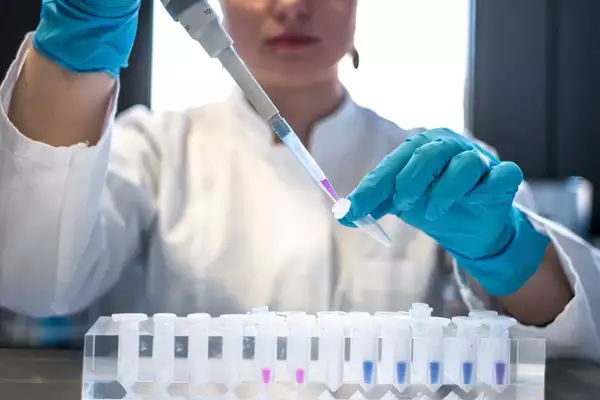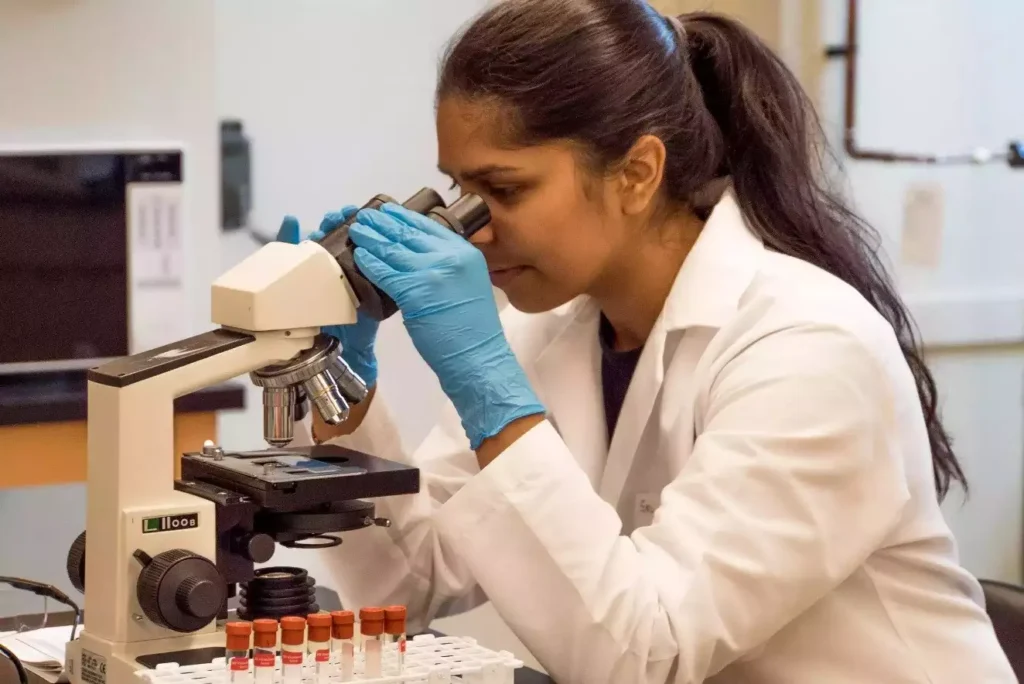Scientists at the Indian Association for the Cultivation of Science (IACS) recently discovered Novel Porphyrin Compound for Anticancer Activity, using human breast cancer cells.
Key Findings of the Discovery:
- Researchers developed a novel porphyrin compound with significant anticancer activity.
- This compound specifically targets and binds to the cellular topoisomerase 1 (Top1) enzyme, crucial for maintaining DNA architecture, which is overexpressed in cancer cells.
- By inhibiting Top1, the compound induces DNA damage and cell death in cancer cells.
- The compound showed reduced cytotoxicity in breast cancer cells with knocked-down Top1 enzyme levels, confirming that Top1 is the target.
- Overexpression of Top1 in cancer cells attracts more of the compound, leading to increased cell death.
- Cellular studies demonstrated a 3-5 fold increase in ROS levels in breast cancer cells treated with the compound, resulting in DNA strand breaks and increased cell death.
- This elevated ROS production is a unique feature of this neutral porphyrin compound, as previous studies mainly focused on cationic and anionic porphyrins.
Mechanism of Action
- The compound binds selectively to the Top1 enzyme in cancer cells.
- Top1 is vital for DNA replication and transcription, and its inhibition leads to DNA torsional strain, an increase in reactive oxygen species (ROS), DNA degradation, and cell death.
- This mechanism was validated in both in vitro (test tube experiments) and ex vivo (outside a living organism) cellular studies.
DNA Repair and Cancer Resistance:
- DNA repair is a collection of processes by which a cell identifies and corrects damage to the DNA molecules that encode its genome.
- In both prokaryotic and eukaryotic organisms, DNA repair is essential for maintaining the integrity of the genetic code and ensuring the survival of the species.
- Damage to DNA can occur due to a variety of factors, including environmental influences (UV radiation, chemical exposure), errors during DNA replication, and normal metabolic processes.
- DNA repair ensures the integrity of the genetic code and includes direct reversal of damage, excision repair, and post-replication repair.
- Cancer cells often use enzymes like TDP1 to repair DNA damage from chemotherapy drugs, leading to treatment resistance.
Ref: Source
| UPSC IAS Preparation Resources | |
| Current Affairs Analysis | Topperspedia |
| GS Shots | Simply Explained |
| Daily Flash Cards | Daily Quiz |
Frequently Asked Question:
How does the porphyrin compound work against cancer cells?
The compound binds selectively to the Top1 enzyme, inhibiting its activity. This results in DNA torsional strain, increased reactive oxygen species (ROS) production, DNA degradation, and ultimately cell death. The mechanism has been validated through in vitro and ex vivo cellular studies.
Why is the Top1 enzyme important in cancer cells?
Top1 is essential for DNA replication and transcription, processes that are crucial for cell division and growth. Inhibiting Top1 prevents cancer cells from maintaining their DNA structure, leading to cell death.
What is DNA repair?
DNA repair is a collection of processes that identify and correct damage to DNA molecules, ensuring the integrity of the genetic code.



